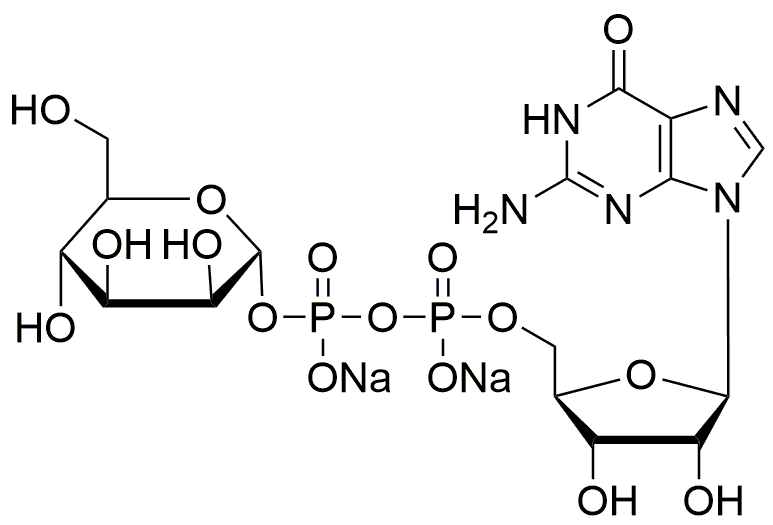Guanosine 5'-diphospho-D-mannose sodium salt from Saccharomyces cerevisiae is widely utilized in research focused on:
- Biotechnology: This compound serves as a crucial substrate in enzymatic reactions, particularly in the synthesis of glycoproteins, which are essential for various biopharmaceuticals.
- Cell Biology: It plays a significant role in cell signaling pathways, helping researchers understand cellular processes and interactions, which can lead to advancements in cancer research.
- Pharmaceutical Development: Used in drug formulation, it enhances the stability and efficacy of active pharmaceutical ingredients, making it valuable in the production of more effective medications.
- Food Industry: As a food additive, it can improve the texture and shelf-life of products, appealing to manufacturers looking to enhance product quality.
- Research on Metabolic Disorders: This compound is instrumental in studying metabolic pathways, particularly in conditions like diabetes, providing insights that can lead to new therapeutic strategies.
General Information
Properties
Safety and Regulations
Applications
Guanosine 5'-diphospho-D-mannose sodium salt from Saccharomyces cerevisiae is widely utilized in research focused on:
- Biotechnology: This compound serves as a crucial substrate in enzymatic reactions, particularly in the synthesis of glycoproteins, which are essential for various biopharmaceuticals.
- Cell Biology: It plays a significant role in cell signaling pathways, helping researchers understand cellular processes and interactions, which can lead to advancements in cancer research.
- Pharmaceutical Development: Used in drug formulation, it enhances the stability and efficacy of active pharmaceutical ingredients, making it valuable in the production of more effective medications.
- Food Industry: As a food additive, it can improve the texture and shelf-life of products, appealing to manufacturers looking to enhance product quality.
- Research on Metabolic Disorders: This compound is instrumental in studying metabolic pathways, particularly in conditions like diabetes, providing insights that can lead to new therapeutic strategies.
Documents
Safety Data Sheets (SDS)
The SDS provides comprehensive safety information on handling, storage, and disposal of the product.
Product Specification (PS)
The PS provides a comprehensive breakdown of the product’s properties, including chemical composition, physical state, purity, and storage requirements. It also details acceptable quality ranges and the product's intended applications.
Certificates of Analysis (COA)
Search for Certificates of Analysis (COA) by entering the products Lot Number. Lot and Batch Numbers can be found on a product’s label following the words ‘Lot’ or ‘Batch’.
*Catalog Number
*Lot Number
Certificates Of Origin (COO)
This COO confirms the country where the product was manufactured, and also details the materials and components used in it and whether it is derived from natural, synthetic, or other specific sources. This certificate may be required for customs, trade, and regulatory compliance.
*Catalog Number
*Lot Number
Safety Data Sheets (SDS)
The SDS provides comprehensive safety information on handling, storage, and disposal of the product.
DownloadProduct Specification (PS)
The PS provides a comprehensive breakdown of the product’s properties, including chemical composition, physical state, purity, and storage requirements. It also details acceptable quality ranges and the product's intended applications.
DownloadCertificates of Analysis (COA)
Search for Certificates of Analysis (COA) by entering the products Lot Number. Lot and Batch Numbers can be found on a product’s label following the words ‘Lot’ or ‘Batch’.
*Catalog Number
*Lot Number
Certificates Of Origin (COO)
This COO confirms the country where the product was manufactured, and also details the materials and components used in it and whether it is derived from natural, synthetic, or other specific sources. This certificate may be required for customs, trade, and regulatory compliance.


